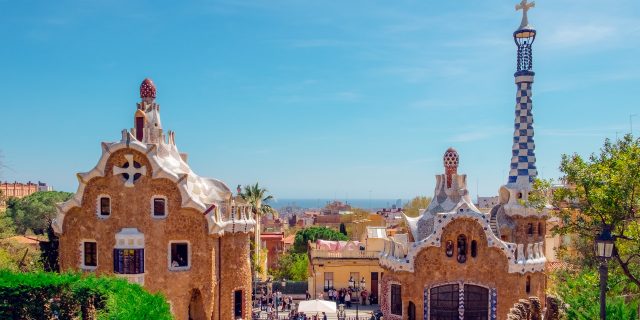
Spanish culture is steeped in centuries of tradition and has been shaped by the influence of many other cultures. Spaniards are known for their strong sense of family, traditional celebrations, vibrant history, and varied cuisine. An understanding of Spain’s past can help visitors appreciate its current culture and traditions.
Exploring the Fascinating Traditions of Spanish Culture
Exploring the fascinating traditions of Spanish culture offers visitors an in-depth look at a rich tapestry of customs and values. From vibrant festivals to ancient rituals, Spain’s culture is as varied and unique as its landscape. A visit to Spain allows travelers to experience firsthand the beauty and majesty of this vibrant country.
One major cultural tradition in Spain is the celebration of fiestas. Fiestas are vibrant, animated festivals that often feature traditional music and dance performances, colorful costumes, and fireworks displays. The most popular fiesta celebrated in Spain is El Día de la Raza (Day of the Race) which commemorates the day Christopher Columbus arrived in the Americas.
Uncovering the History Behind Popular Spanish Traditions
Spain is a nation with a vibrant culture. From the art forms to the food and music, Spanish traditions have been around for centuries and have been passed down through generations. But what are some of these popular Spanish traditions? What history lies behind them? In this article, we’ll take a look at some of the most beloved Spanish traditions and uncover the history behind them.
One of the most popular Spanish traditions is La Tomatina, or tomato fight. It’s a festival held in Buñol, Spain every year on the last Wednesday in August. Legend has it that the tradition began when a group of young people started throwing tomatoes at each other during a street parade in 1945. The tradition has since grown into a popular event with thousands of people participating each year.
Another beloved Spanish tradition is bullfighting, or ‘corrida de toros.’ Bullfighting has been around for over 2,000 years and is deeply embedded in the culture and identity of Spain. It’s believed that the practice originated in southern Spain and has since spread throughout the country. Bullfighting is a dangerous sport and participants try to tame the bull with their skill and courage. It’s considered an art form in Spain and while controversial, it remains a beloved tradition for many Spaniards.
One of the most iconic Spanish traditions is flamenco dancing or ‘baile flamenco.’ The exact history of the dance is unclear, but it’s believed to have originated in southern Spain and spread across the country. It’s a passionate art form that combines traditional Spanish music with energetic movements. Flamenco dancing has gained worldwide recognition and is now performed all over the world.
Finally, there’s the tradition of ‘sobremesa.’ Sobremesa is a social practice in which families and friends gather after meals to chat, tell stories, and partake in leisure activities. This tradition dates back centuries and has been passed down from generation to generation. It’s a popular way for Spaniards to spend time together and strengthen the bonds between family members, friends, and even strangers.
The Art and Music at the Heart of Spanish Culture
The art and music of Spain have been celebrated for centuries, from its rich cultural heritage to its passionate expression. Professional spanish translation services culture is steeped in an abundance of artistic forms, ranging from vibrant flamenco performances to awe-inspiring architecture. Music plays a vital role in the culture, with traditional instruments such as guitars, tambourines, and castanets being used to create an exotic atmosphere. Spanish music ranges from gentle ballads to lively jotas and flamenco guitar solos. Similarly, art is a key element of Spain’s culture, with classical painting styles such as tenebrism and mannerism employed by the renowned painter Diego Velázquez. Much of the art and music of Spain is a reflection of its turbulent history, with many pieces depicting both joy and suffering. From ancient historical sites to stunningly beautiful masterpieces in various mediums, the art and music of Spain serve as an integral part of its culture. Furthermore, Spanish cinema has become increasingly popular in recent years, influencing international movie trends and inspiring modern directors worldwide. Spanish culture is a unique blend of artistic expression, music, history, and cinema that will continue to capture the hearts of many for generations to come.
Discovering the Secrets of Flamenco Dancing
Flamenco dancing is a passionate and energetic form of dance that has been part of Spanish culture for centuries. The origins of flamenco can be traced back to the 16th century when it was first seen as a social dance performed in gypsy communities. Today, flamenco is still popular throughout Spain and around the world. Learning to dance flamenco is a great way to experience the culture and traditions of the Spanish people.
In flamenco, dancers use their feet and upper bodies to create intricate patterns and movements that are both graceful and powerful. The steps themselves require complex timing, coordination, and balance as well as a great deal of arm and hand gestures. Flamenco is also known for its passionate emotions and fiery spirit, which express joy, sorrow, anger, and love.
Mastering the art of flamenco dancing requires dedication, practice, and a good teacher. There are various styles of flamenco dance from the classical style to more modern forms such as sevillanas or fandangos. Each style requires its own set of techniques and steps that must be mastered to become a skilled dancer.
Classes are available to learn the basics of flamenco dancing, or more advanced students can seek out master teachers who can provide valuable advice on how to perfect their technique. The more experience one has, the better flamenco dancing will be.
Flamenco dancing is a great way to learn about Spanish culture and traditions, as well as to find enjoyment in movement and music. It is also an excellent form of exercise and can help build strength, stamina, flexibility, and coordination. With dedication and practice, anyone can become a skilled flamenco dancer.


